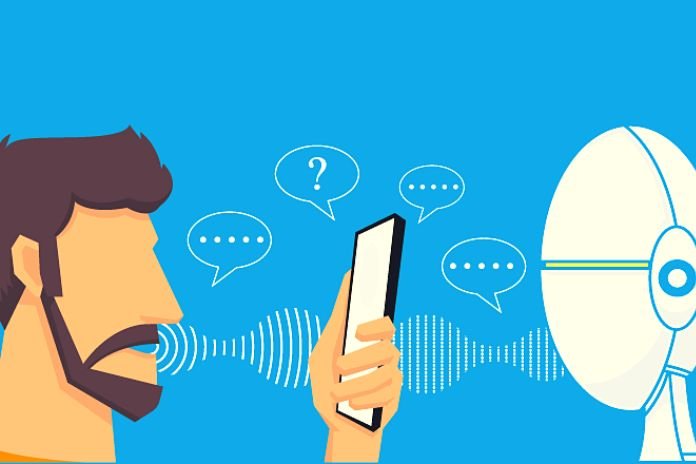The Chatbot, The Virtual Agent, And The Human Service
Chatbot, The virtual agent: Robots in attendance have many benefits, we already know. But what about the human service and the virtual agent option? Are they better?
Before knowing the answer for your company, care must be taken to understand the scenario of using technologies. After all, they didn’t come to take over the entire human service space.
What Are The Differences Between The Three Modes?
It is essential to understand each modality well before adopting them. See how they differ! the chatbot. The “bot” is short for “robot.” They are virtual programs that use Artificial Intelligence technologies to perform human tasks. In the case of customer service, the chatbot is what “talks to customers” and seeks to solve their doubts through texts. They work on both websites and messaging apps.
Another critical point is that there are two types of chatbots: traditional ones and those that use cognitive computing, that is, that can acquire knowledge. The difference between them is that conventional chatbots work through a decision tree.
In this way, based on programmed questions and answers, the customer is guided through a flowchart to reach the solution.
In the case of cognitive chatbots, they use technology to process and understand the language written by your customer. Thus, they can understand it and respond according to the context, closer to what a real conversation would be.
The Virtual Agent
Virtual agents are also examples of using Artificial Intelligence. Previously considered more “intelligent” than boys, these are advanced technologies that voice commands can even activate.
Thus, these agents can perform functions such as making calls, understanding more complex messages, answering questions, and learning from consumer habits, as we see with examples such as Apple’s Siri; and Amazon’s Alexa.
However, machine learning allows robots to provide better care and perform more functions, just like virtual assistants. Therefore, the difference between them tends to decrease.
The Human Service
Human service is what we are used to. That is, the customer gets in touch with someone who will actually talk to him. Thus, it is possible to expose your doubts and complaints and, from the service, resolve the issue.
In this case, the advantage of personal service is having someone honest who can understand the whole context of your situation. As for the disadvantage, the fact that a person can only serve one customer at a time, requiring a team, is something that directly interferes with productivity and costs.
How Do They Complement Each Other?
In the case of robots, they are configured with various features of Artificial Intelligence to provide highly accurate service. That is, you can use:
- pre-configured questions and answers;
- advanced search for solutions;
- calculations and database.
In this way, your service can previously resolve the customer’s question or propose options for the customer to guide the question. A robot or virtual assistant can answer not very complex questions.
So you can think of using both ways, thinking about the scalability of the service. That way, the customer can start with the chatbot, but if they haven’t found a solution, they can be directed to a real agent.
Working with both is an excellent solution to direct the customer to the fitting attendant. Passing through the bot can be filtered and referred to the person in the corresponding sector.
With this, the customer service time will be reduced, and the attendant will have information about the previous conversation without having to repeat the question.
The Future Of Care
We have already experienced the need for omnichannel services by companies. That is, being present in different channels so that the customer experience is the best possible in all its processes.
Some factors, such as increasingly faster and more efficient service, only tend to grow. Another critical point is the focus on the positive customer experience, which will continue to be a priority in the future – whether before or after it.
In this way, companies should be where their customers are more than investing in being everywhere. For example, don’t create profiles on all social networks but the ones your customers frequent. To know this, mapping behaviors and understanding where they speak is essential.
Regarding the personalization of service, which has already become a trend, people like to feel unique and talk to someone who understands them. Precisely for this reason, there is still an erroneous view that robots cannot help consumers.
Maybe it happens precisely because of bad experiences. Therefore, it is necessary to be careful with using chatbots, including not leaving all the work to them but integrating them with real attendants.
In this case, as the growth of chatbots only tends to increase, companies that make the correct use of technology will be able to take full advantage of service optimization.
Can Chatbots Replace Humans?
With the evolution of Artificial Intelligence, robots will learn more and more about how to do things the way we expect. Therefore, in all areas, they tend to be present. In this case, what will define your ability to do the complete work of a human will be automation.
In the example of a smart car, it will not only work without a human touch but also do the fueling itself, go to the service, and return home without needing previous orders or schedules.
But what about service robots? Saying that all complex problems — which need real attendants — will be solved by bots is still not a reality. However, the answer to this question is based on data and Artificial Intelligence.
For now, chatbots help with simple questions and replace automatic and repetitive tasks, which consume a lot of time for an employee. However, if they can learn a lot and understand the complexity of human conversation, then they may be self-sufficient in the future.
Also Read: The Importance Of Using Bots In Your Company!
Share this content:











Post Comment